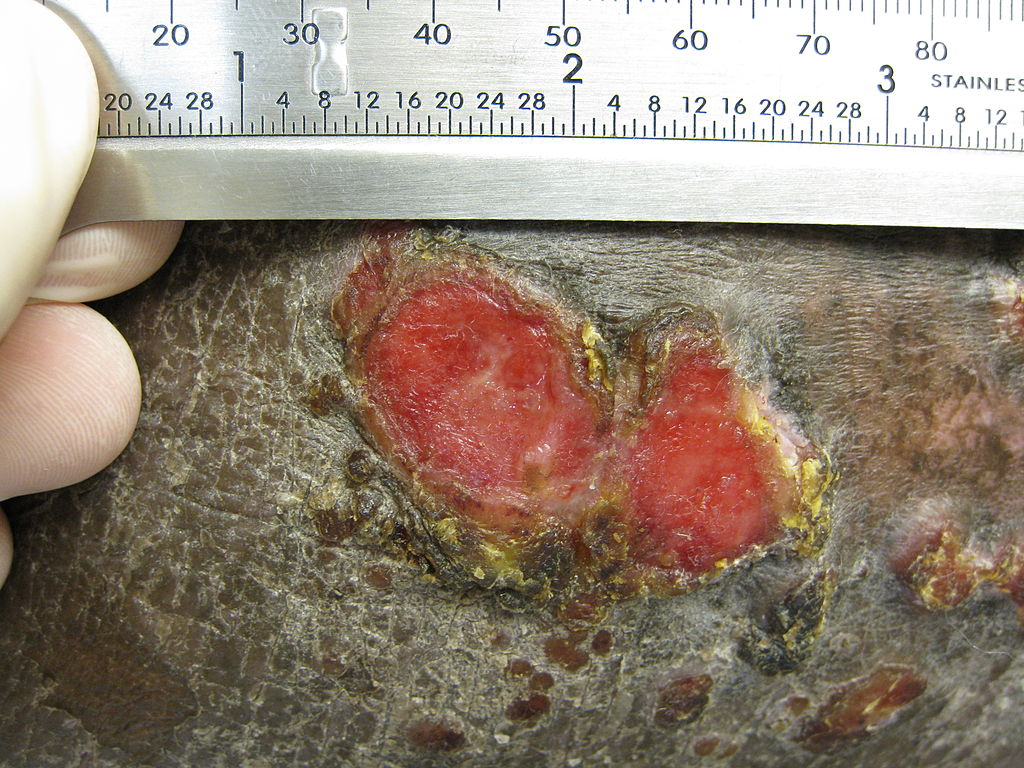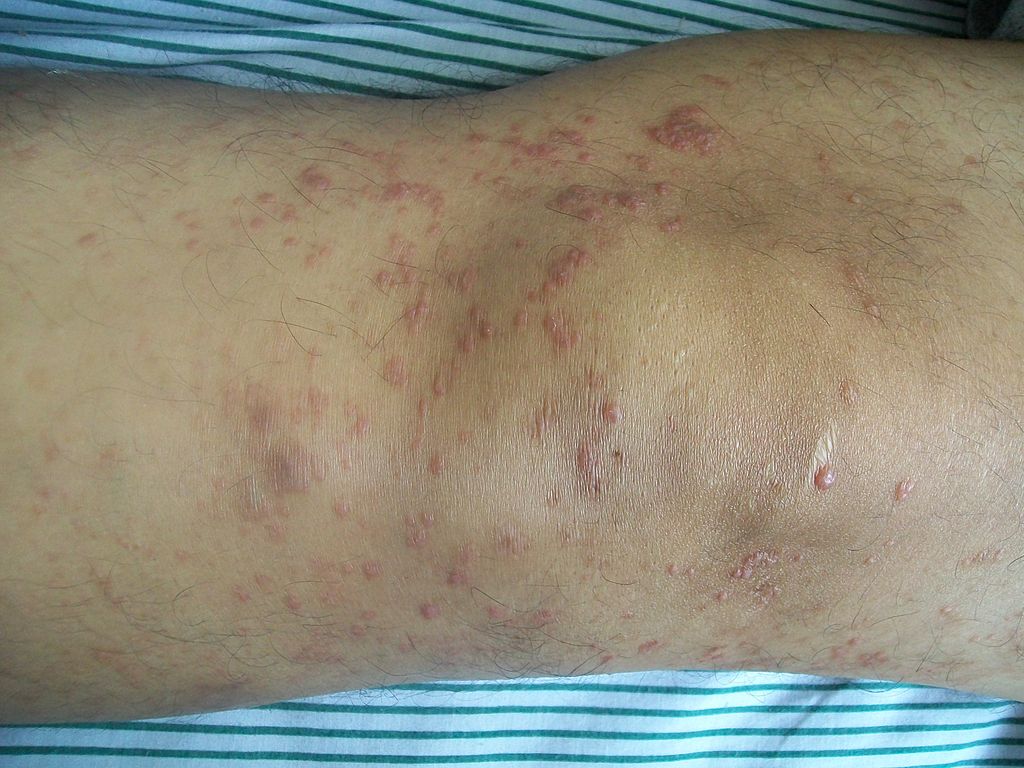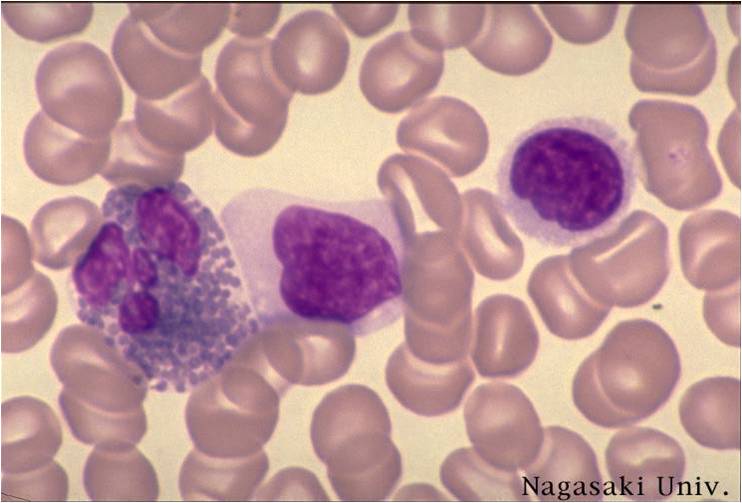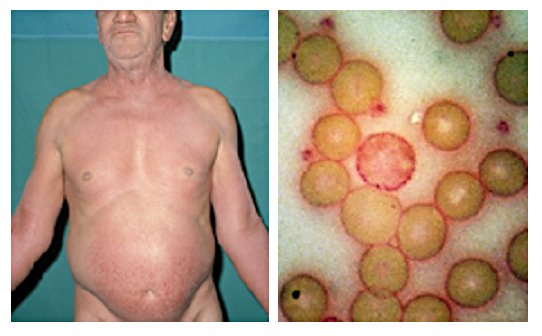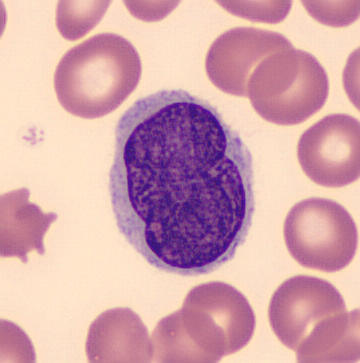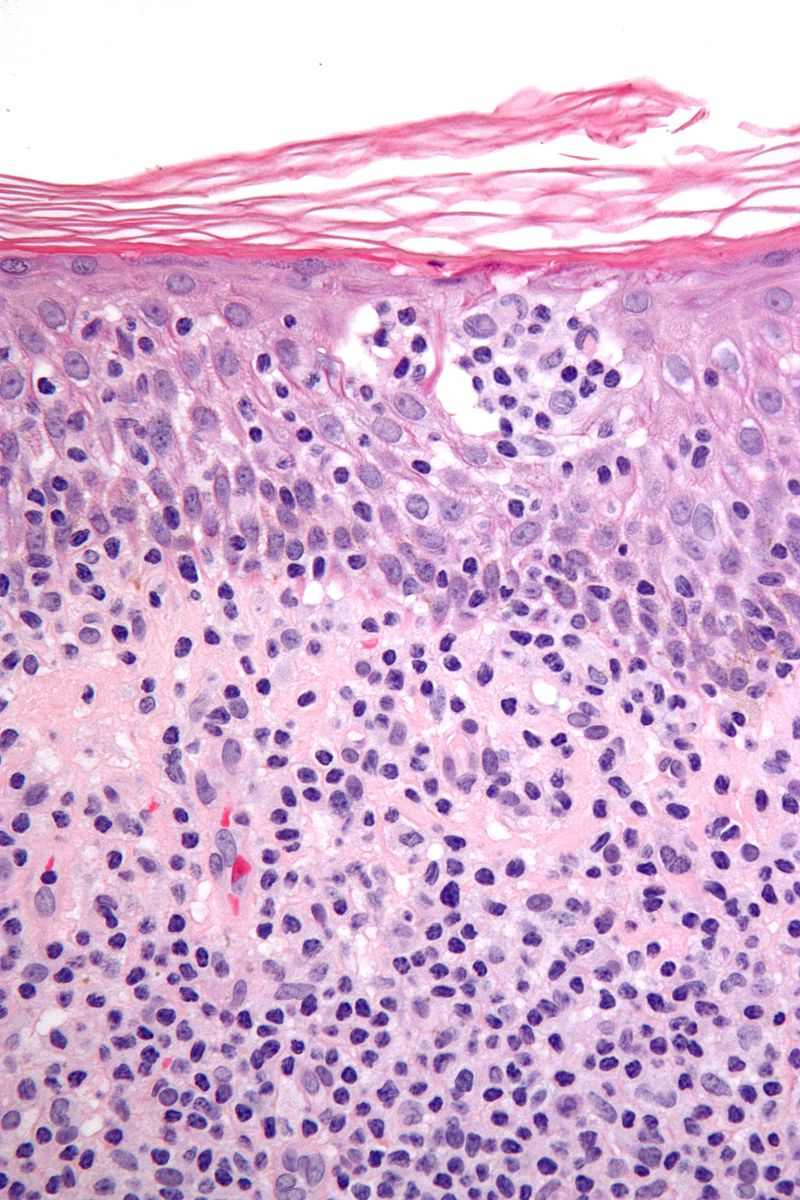Mycosis fungoides pathophysiology: Difference between revisions
No edit summary |
No edit summary |
||
| Line 39: | Line 39: | ||
</gallery> | </gallery> | ||
==Genetics== | ==Genetics== | ||
[ | * Development of cutaneous T cell lymphoma is the result of multiple genetic mutations.<ref name="ShinMonti2007">{{cite journal|last1=Shin|first1=J.|last2=Monti|first2=S.|last3=Aires|first3=D. J.|last4=Duvic|first4=M.|last5=Golub|first5=T.|last6=Jones|first6=D. A.|last7=Kupper|first7=T. S.|title=Lesional gene expression profiling in cutaneous T-cell lymphoma reveals natural clusters associated with disease outcome|journal=Blood|volume=110|issue=8|year=2007|pages=3015–3027|issn=0006-4971|doi=10.1182/blood-2006-12-061507}}</ref><ref name="WongMishra2011">{{cite journal|last1=Wong|first1=Henry K.|last2=Mishra|first2=Anjali|last3=Hake|first3=Timothy|last4=Porcu|first4=Pierluigi|title=Evolving Insights in the Pathogenesis and Therapy of Cutaneous T-cell lymphoma (Mycosis Fungoides and Sezary Syndrome)|journal=British Journal of Haematology|volume=155|issue=2|year=2011|pages=150–166|issn=00071048|doi=10.1111/j.1365-2141.2011.08852.x}}</ref><ref name="Wilcox2011">{{cite journal|last1=Wilcox|first1=Ryan A.|title=Cutaneous T-cell lymphoma: 2011 update on diagnosis, risk-stratification, and management|journal=American Journal of Hematology|volume=86|issue=11|year=2011|pages=928–948|issn=03618609|doi=10.1002/ajh.22139}}</ref><ref name="Whittaker2006">{{cite journal|last1=Whittaker|first1=Sean|title=Biological Insights into the Pathogenesis of Cutaneous T-Cell Lymphomas (CTCL)|journal=Seminars in Oncology|volume=33|year=2006|pages=3–6|issn=00937754|doi=10.1053/j.seminoncol.2005.12.015}}</ref><ref>{{Cite journal | ||
| author = [[Henry K. Wong]] | |||
| title = Novel biomarkers, dysregulated epigenetics, and therapy in cutaneous T-cell lymphoma | |||
| journal = [[Discovery medicine]] | |||
| volume = 16 | |||
| issue = 87 | |||
| pages = 71–78 | |||
| year = 2013 | |||
| month = September | |||
| pmid = 23998443 | |||
}}</ref> | |||
OR | OR | ||
Revision as of 21:26, 7 December 2018
|
Cutaneous T cell lymphoma Microchapters |
Editor-In-Chief: C. Michael Gibson, M.S., M.D. [1];Associate Editor(s)-in-Chief: Sogand Goudarzi, MD [2]
Overview
Cutaneous T cell lymphoma arises from T-cell lymphocytes, which are normally involved in the cell mediated immune response. On microscopic histopathological analysis, atypical lymphoid cells, polymorphous inflammatory infiltrate in the dermis, and lymphocytes with cerebroid nuclei are characteristic findings of mycosis fungoides.
Pathophysiology
- Cutaneous T cell lymphoma arises from T-cell lymphocytes, which are normally involved in the cell mediated immune response.
- Sezary syndrome and mycosis fungoides are T-cell lymphomas that primary manifest as multiple cutaneous lesions.
- Mycosis Fungoides is the most common type of cutaneous T cell lymphoma.
- Sézary's cells are T-cells that have pathological quantities of mucopolysaccharides.
- Sézary's disease is sometimes considered a late stage of mycosis fungoides.
Gross Pathology
- On gross pathology, irregular, erythematous, circular patches are characteristic findings of cutaneous T cell lymphoma.
-
Plaque of mycosis fungoides
-
Mycosis fungoides knee
Microscopic Pathology
- Mycosis fungoides pathological course may be divided into three main stages:
- Premycotic stage
- Mycotic stage
- Tumoros stage
- The premycotic stage
- Non-diagnostic and represented by chronic nonspecific dermatisis associated with psoriasiform changes in epidermis
- The mycotic stage
- Shows a polymorphous inflammatory infiltrate in the dermis that contains small numbers of frankly atypical lymphoid cells
- These cells may line up individually along the epidermal basal layer
- The presence of spongiosis is highly suggestive of mycosis fungoides
- Tumoros stage
- Expansion of the dermis due to dense infiltration by medium sized lymphocytes that are typically characterized by a cerebroid nuclei.
-
Sézary's disease
-
61-year-old man presented in 1972 with unrelenting pruritus of six months’ duration. On the right is his peripheral blood film stained with Periodic Acid-Schiff (PAS) showing a neoplastic T cell (Sézary cell).
-
Pleomorphic abnormal T cell with the characteristic cerebriform nuclei (Peripheral blood - MGG stain)
-
Features: Nests of lymphocytes in the epidermis; "Pautrier microabscesses". Single lymphocytes in epidermis; "lymphocyte exocytosis". Short linear arrays of lymphocytes along the basal layer of the epidermis; "epidermotropism".
Genetics
- Development of cutaneous T cell lymphoma is the result of multiple genetic mutations.[1][2][3][4][5]
OR
Genes involved in the pathogenesis of [disease name] include:
- [Gene1]
- [Gene2]
- [Gene3]
OR
The development of [disease name] is the result of multiple genetic mutations such as:
- [Mutation 1]
- [Mutation 2]
- [Mutation 3]
References
- ↑ Shin, J.; Monti, S.; Aires, D. J.; Duvic, M.; Golub, T.; Jones, D. A.; Kupper, T. S. (2007). "Lesional gene expression profiling in cutaneous T-cell lymphoma reveals natural clusters associated with disease outcome". Blood. 110 (8): 3015–3027. doi:10.1182/blood-2006-12-061507. ISSN 0006-4971.
- ↑ Wong, Henry K.; Mishra, Anjali; Hake, Timothy; Porcu, Pierluigi (2011). "Evolving Insights in the Pathogenesis and Therapy of Cutaneous T-cell lymphoma (Mycosis Fungoides and Sezary Syndrome)". British Journal of Haematology. 155 (2): 150–166. doi:10.1111/j.1365-2141.2011.08852.x. ISSN 0007-1048.
- ↑ Wilcox, Ryan A. (2011). "Cutaneous T-cell lymphoma: 2011 update on diagnosis, risk-stratification, and management". American Journal of Hematology. 86 (11): 928–948. doi:10.1002/ajh.22139. ISSN 0361-8609.
- ↑ Whittaker, Sean (2006). "Biological Insights into the Pathogenesis of Cutaneous T-Cell Lymphomas (CTCL)". Seminars in Oncology. 33: 3–6. doi:10.1053/j.seminoncol.2005.12.015. ISSN 0093-7754.
- ↑ Henry K. Wong (2013). "Novel biomarkers, dysregulated epigenetics, and therapy in cutaneous T-cell lymphoma". Discovery medicine. 16 (87): 71–78. PMID 23998443. Unknown parameter
|month=ignored (help)
